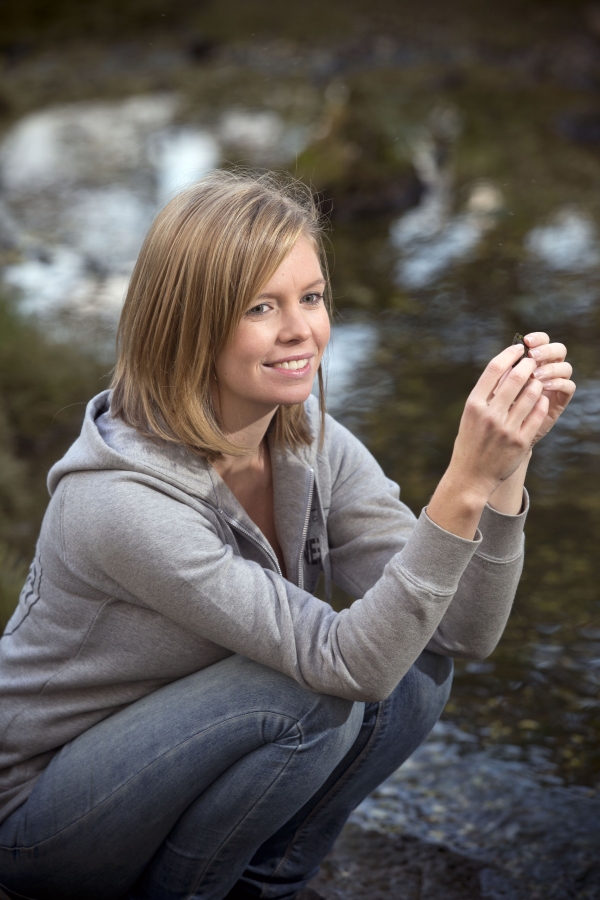Petra Pearce's first job for NIWA was sifting through stormwater sediment – mud. Petra picked up the part-time job while studying science at university. "I learned first-hand the hard graft that goes into the glossy results and reports," she says, "and I loved it".
That willingness to get her hands dirty at fieldwork led her into a slew of part-time jobs at NIWA, such as market sampling at Whitianga with the fisheries team, and sanding kauri slabs for dendrochronology (tree-ring reading).
"Many of my university friends were envious – the NIWA job was ideal for a science student.
"University is all about theory and book learning, whereas the NIWA work was in the lab and in the field. It was hands-on science collecting specimens and data. It wasn't complicated, but I was seeing what went on behind the high level material I was learning at university," she says.
The NIWA work also taught Petra that applied natural science was what she wanted to pursue. "Many women from my high school were specialising in medical sciences at university, but the NIWA work proved my passion for environmental science. I love being outdoors, interacting with the natural world."
Petra's love of the outdoors started early in life. Growing up in Parnell, she recalls that summers were spent at the family bach near Russell, in the Bay of Islands. "My parents were outdoor types. We tramped throughout Northland and were often at the beach and fishing."
She always knew that her future career would be connected with the environment. "At my high school, young women were being encouraged to be lawyers, but I knew that life wasn't for me."
Robert Frost, the great poet of Nature, said, "I am not a teacher, but an awakener". The teacher that awakened Petra to environmental science was her high school geography teacher. "Many students took geography at high school because they thought it was easy – they had no real interest. But our teacher was incredibly enthused by the subject, and we were all caught up in her passion for it. She took us on many fascinating field trips, which made the subject fun and interesting."
At university Petra was again encouraged by a "really inspirational" Honours supervisor, who was impressed with her work on the influence of vegetation and wood on the shape of rivers in different climatic regions. He suggested she do a Master's degree, in which she looked at controls on river channel shape at different spatial and temporal scales across different landscapes – native forest, pine forest and pasture.
"My Honours was effectively a literature review. But the Master's was heavy on novel fieldwork. I had to traipse up and down cold Waikato waterways in July."
Nowadays, Petra lives with her partner Shaun, a builder, in Howick, East Auckland. They regularly tour New Zealand in their small campervan. "We considered renting a campervan to trip around the South Island. But we figured, why not buy an old one and fix it up how we wanted it."
Her favourite camping experience was a three-week summer tour of the South Island in the van, staying at isolated Department of Conservation campsites along the West Coast.
"My favourite was in Kahurangi National Park. We walked through the Oparara Basin. The area has incredible huge limestone caves with rivers running through them that are coloured like tea, from the tannins in the soil. The road there was hellish: a one-lane gravel road, steep and washed-out. We thought the van's brakes were going to bust – but it was definitely worth it!"
Petra is now part of NIWA's National Climate Centre, which comprises about 30 staff throughout NIWA.
Find out more about our National Climate Centre
One of her main tasks is pulling together data and assessments for monthly, seasonal and annual assessments of New Zealand's climate. She also handles enquiries from the public and media on climate data.
With core funding, as well as with the help of clients like the Hawke's Bay Regional Council, the Centre is in the process of updating regional climatology reports last published by the Meteorological Service of New Zealand in the 1980s. "I'm working my way through a publication for each region. We've updated the format for six regions so far – new data, new maps."
Petra's favourite project to date has been work at Lake Tennyson looking at glacial deposits on moraines. "We're dating greywacke boulders using cosmogenic nuclide tests (measuring decay of quartz exposed to sunlight) to see how long ago the glacier retreated, which will give us a sense of climate changes over the time."
"I wouldn't change my job for all the world. I'm spending a couple of weeks a year out in the field, and I'm collaborating daily with smart and fun people on practical science challenges."
She's hoping to someday work on a part of the environment that has featured so strongly in her life and study: waterways. "There are connections between rivers and climate, but not much has been researched in that space in New Zealand so far."
So when you hear about the unfolding of connections between waterways and climate, remember that it started with a focused young woman wading through Waikato creeks in winter. And she was there because of an enthusiastic geography teacher.
Petra was the runner-up in the Early Career Science Award category of the NIWA Excellence Awards 2013.

